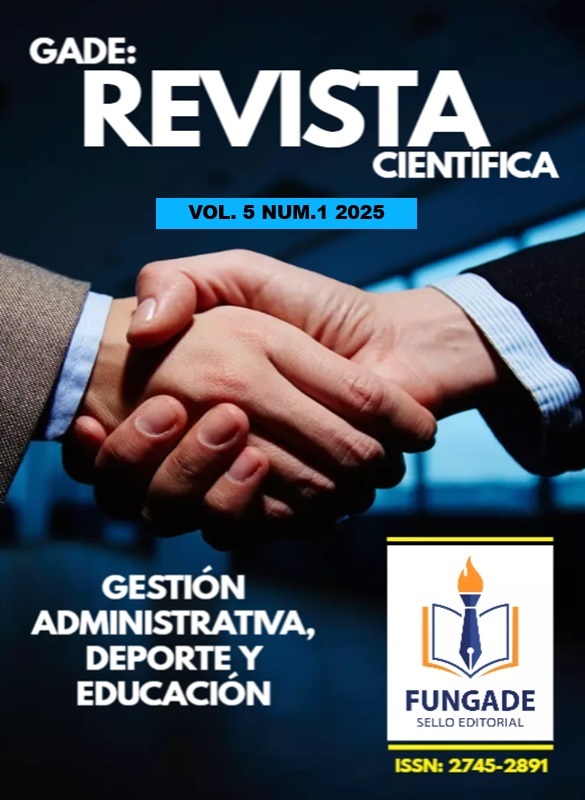Motor development in the elderly: Active and Healthy Aging
Abstract
The article aims to analyze and discuss the factors that influence motor development in older adults, emphasizing the role of physical activity in health and independence as people age. Using a qualitative approach, it systematically reviews the existing literature to explore the benefits and challenges related to motor development in older adults, evidencing how exercise and motor activities can mitigate the effects of aging. Factors that influence motor development in older adults are identified, including biological, psychological, and social aspects. Chronic diseases, mobility limitations, and age-related decline in muscle mass and flexibility are physical barriers to maintaining motor health. Psychosocial factors, such as motivation, mental health, and social support systems, also play a fundamental role in a person's ability to participate in and maintain physical activity.
Downloads
References
Academic Journals. (2023). Active and healthy aging: Physical and cognitive benefits of exercise in the elderly. Quarterly Journal of Medicine. Retrieved from https://academic.oup.com
Bandura, A. (1997). Self-efficacy: The exercise of control. W.H. Freeman.
European Review of Aging and Physical Activity. (2023). Effects of motor practice on cognitive disorders in older adults. European Review of Aging and Physical Activity. Retrieved from https://eurapa.biomedcentral.com
Fragala, M. S., et al. (2019). Resistance training for older adults: Position statement from the National Strength and Conditioning Association. Journal of Strength and Conditioning Research, 33(8), 2019–2052. Retrieved from [https://journals.lww.com](https://journals.lww.com)
Fried, L. P., et al. (2001). Frailty in older adults: Evidence for a phenotype. Journals of Gerontology: Series A, Biological Sciences and Medical Sciences, 56(3), M146–M156. Retrieved from [https://academic.oup.com](https://academic.oup.com)
Kattenstroth, J. C., et al. (2013). Effects of dance on physical and cognitive function in older adults. Aging Clinical and Experimental Research, 25(5), 445–456. Retrieved from [https://link.springer.com](https://link.springer.com)
Kirkwood, T. B., et al. (2014). Understanding the cultural and societal determinants of physical activity in older adults. Journal of Aging Studies, 28(1), 67–74. Retrieved from [https://www.sciencedirect.com](https://www.sciencedirect.com)
Li, F., et al. (2021). Tai Chi as an intervention to reduce falls in older adults: Systematic review and meta-analysis. Journal of Aging and Health, 33(3-4), 177–190. Retrieved from [https://journals.sagepub.com](https://journals.sagepub.com)
Lopez-Otin, C., Blasco, M. A., Partridge, L., Serrano, M., & Kroemer, G. (2023). Physical activity as a determinant of successful aging. Cell, 153(6), 1194-1217. Retrieved from [https://www.cell.com](https://www.cell.com)
Marmeleira, J. F., Raimundo, A., & del Pozo-Cruz, J. (2023). The benefits of physical activity and exercise in motor and cognitive functions in older adults. International Journal of Environmental Research and Public Health. Retrieved from https://www.mdpi.com
Martinson, M. L., et al. (2022). Combined physical and psychological interventions for older adults: A systematic review. Journal of Gerontology: Medical Sciences. Retrieved from [https://academic.oup.com](https://academic.oup.com)
Molina, K. I., et al. (2021). The effectiveness of virtual reality-based balance training in older adults: A systematic review and meta-analysis. Journal of NeuroEngineering and Rehabilitation, 18(1), 34. Retrieved from [https://jneuroengrehab.biomedcentral.com](https://jneuroengrehab.biomedcentral.com)
Montero-Odasso, M., et al. (2019). Dual-task training and mobility in older adults: The interplay between cognitive and motor domains. Journal of the American Geriatrics Society, 67(2), 229–238. Retrieved from [https://agsjournals.onlinelibrary.wiley.com](https://agsjournals.onlinelibrary.wiley.com)
Nikolich-Zugich, J. (2023). Aging and the immune system. Nature Reviews Immunology, 18(5), 315-328. Retrieved from [https://www.nature.com](https://www.nature.com)
North, B. J., & Sinclair, D. A. (2023). Aging and physical resilience: Interplay between motor development and chronic disease prevention. Circulation Research. Retrieved from [https://www.ahajournals.org](https://www.ahajournals.org)
Phillips, S. M., et al. (2023). Social support and its role in physical activity among older adults. Social Science & Medicine, 114, 11–20. Retrieved from [https://www.sciencedirect.com](https://www.sciencedirect.com)
Schaefer, S., & Schumacher, V. (2020). The interplay between cognitive and motor function in healthy older adults: The role of dual-task training. Frontiers in Psychology, 11, 882. Retrieved from [https://www.frontiersin.org](https://www.frontiersin.org)
Sherrington, C., et al. (2019). Exercise for preventing falls in older adults: An updated systematic review and meta-analysis. British Journal of Sports Medicine, 54(15), 885–891. Retrieved from [https://bjsm.bmj.com](https://bjsm.bmj.com)
Shumway-Cook, A., & Woollacott, M. H. (2017). Motor control: Translating research into clinical practice. Lippincott Williams & Wilkins. Retrieved from [https://www.lww.com](https://www.lww.com)
Studenski, S., et al. (2018). Gait speed and survival in older adults. JAMA, 305(1), 50–58. Retrieved from [https://jamanetwork.com](https://jamanetwork.com)
Walston, J. D., et al. (2023). Sarcopenia and muscle function in aging. Journal of Gerontology: Medical Sciences, 72(1), 123-131. Retrieved from [https://academic.oup.com](https://academic.oup.com)
Copyright (c) 2025 Silvio Rafael Villera Coronado

This work is licensed under a Creative Commons Attribution-NonCommercial-NoDerivatives 4.0 International License.






